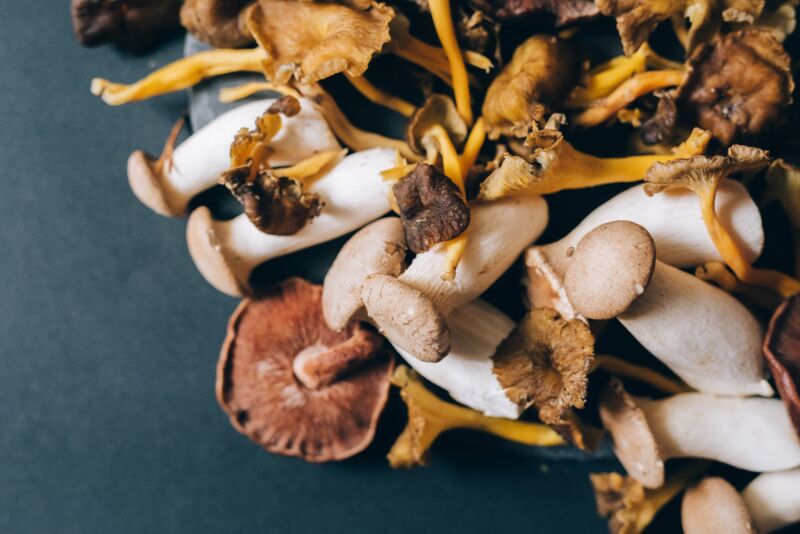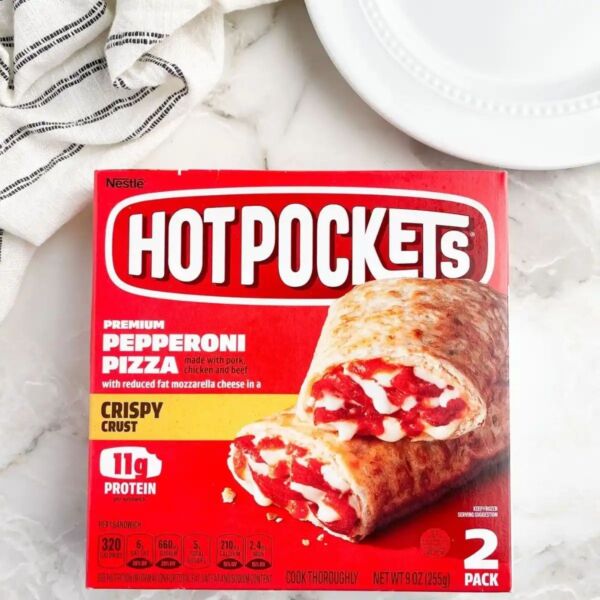Shelf Life of Dried Mushrooms: The Complete Guide
Dried mushrooms are a pantry staple in many kitchens. With their concentrated umami flavor and versatility, it’s no wonder why home cooks and professional chefs alike keep bags of dried mushrooms on hand. But how long do dried mushrooms really last? And what’s the best way to store them to maximize freshness?
In this complete guide, I’ll cover everything you need to know about the shelf life of dried mushrooms and preserving their delicious taste. We’ll look at:
- What dried mushrooms are and how they’re made
- Factors affecting dried mushroom shelf life
- Signs that dried mushrooms have spoiled
- Proper storage methods for dried mushrooms
- Rehydrating dried mushrooms for cooking
- The benefits of cooking with dried mushrooms
By the end of this article, you’ll be a dried mushroom expert! So let’s get cracking and dive right in.
An Introduction to Dried Mushrooms
Dried mushrooms are simply fresh mushrooms that have had most of their moisture content removed. This drying process concentrated the mushroom’s natural umami flavor and preserves them for months or even years without refrigeration.
Many types of fresh mushrooms can be dried, but the most common varieties are:
- Shiitake
- Oyster
- Porcini
- Morel
- Chanterelle
- Maitake (Hen of the Woods)
Dried mushrooms are prized in cooking for adding rich, savory depth to dishes. Their earthy, nutty flavor pairs well with meats, grains, and vegetables. Professional chefs and home cooks use dried mushrooms in everything from sauces and gravies to soups and casseroles.
The drying process involves exposing fresh mushrooms to heat and air circulation, either using the sun’s warmth or a commercial dehydrator. This removes around 90% of the mushroom’s original moisture content. The reduction in water content inhibits bacterial growth and oxidation, allowing dried mushrooms to be safely stored at room temperature.
Now let’s look at the all-important question: how long do dried mushrooms last?
The Shelf Life of Dried Mushrooms
When properly stored, dried mushrooms can retain optimum quality and flavor for 6 months to 1 year past their purchase date. However, a few factors affect just how long dried mushrooms will stay fresh in your pantry.
Factors Affecting Dried Mushroom Shelf Life
The shelf life of dried mushrooms depends on:
- Storage method – Dried mushrooms stored in cool, dry, dark conditions will maintain quality longer compared to mushrooms left in heat or sunlight. Proper storage is crucial.
- Mushroom variety – Denser mushrooms with lower natural moisture content, like porcini and shiitake, often have a longer shelf life than delicate mushrooms like oyster or morel.
- Quality when purchased – Freshly dried, high-quality mushrooms will keep longer than mushrooms that have been sitting around. Check for signs of mold, moisture, or damage before buying.
- Package seal – Well-sealed, intact product packaging prevents moisture and air from entering and degrading mushrooms. Once opened, dried mushrooms should be stored in airtight containers.
With optimal storage conditions and handling, most dried mushrooms will retain good quality and taste for around 1 year past their purchase date. Extremely dense mushrooms like porcini may last several months or more past a year.
On the other hand, dried mushrooms that are stored improperly in hot, humid, or sunny conditions will deteriorate much faster. Signs that your dried mushrooms have spoiled beyond their prime include:
Signs of Spoiled Dried Mushrooms
- Presence of mold or strange odors
- Mushrooms feel damp, gummy, or slimy
- Mushroom pieces appear discolored or shriveled
- Loss of rich umami flavor
- Off or bitter taste when rehydrated
If you observe any of these cues, it’s best to discard the dried mushrooms. Never taste or cook with mushrooms that show signs of spoilage, as they can make you sick.
While dried mushrooms can technically keep for years, their taste and texture quality sharply declines after that 1 year marker. To get the best flavor from your dried mushrooms, use them within a year of purchase. Proper storage is key for preserving their shelf life.
Storing Dried Mushrooms for Maximum Freshness
You want to minimize moisture, air exposure, sunlight, heat, and pests. Follow these tips for dried mushroom storage:
- Keep dried mushrooms in their original packaging or transfer to airtight glass jars or plastic containers. Ensure containers have tight sealing lids.
- Store containers in a cool, dark pantry away from heat sources like the oven or dishwashers. A temperature between 50-60°F is ideal.
- Avoid humidity which can lead to mold growth. Use moisture absorbers if needed.
- Don’t refrigerate dried mushrooms—the cold dampness causes deterioration. Freezing can damage texture.
- Ensure mushrooms are completely dry before storage. Check for moisture inside packaging.
- Inspect stored mushrooms occasionally. Watch for moisture, sliminess, or odors. Discard if any spoilage is detected.
- If mushrooms come loose, store them in an airtight container vs. their original bag. Limit air exposure.
- Once opened, use dried mushrooms within 3-4 months for best quality. Use oldest mushrooms first.
Follow these guidelines to maximize the shelf life of dried mushrooms. With proper storage, most dried mushrooms will retain flavor and freshness for about 1 year past the purchase date.
Rehydrating and Cooking with Dried Mushrooms
Before using dried mushrooms in recipes, you’ll need to rehydrate them by soaking in hot water for 20-30 minutes. This revives their texture and original mushroom flavor.
To rehydrate dried mushrooms:
- Place dried mushrooms in a heatproof bowl and cover completely with boiling water.
- Allow mushrooms to soak for at least 20 minutes, or until softened. Dense, thick mushrooms may need to soak for 30+ minutes.
- Drain, squeezing out excess liquid. Rinse to remove any grit or residue.
- Chop rehydrated mushrooms and use as you would regular mushrooms in your dish.
- Strain and reserve the flavorful mushroom soaking liquid to use for stocks, sauces, or risotto.
Rehydrated dried mushrooms can be substituted into any recipe that calls for fresh mushrooms. Their concentrated flavor means you can use less in a recipe. A good rule of thumb is to use half the amount of dried mushrooms compared to fresh.
Some delicious ways to cook with rehydrated dried mushrooms include:
- Risottos or pasta dishes
- Soups, stews, and stocks
- Sautés and stir fries
- Casseroles or baked pastas
- Omelets, frittatas, or scrambles
- Gravies or sauces for meats
- Mushroom pâté
- Mushroom risotto cakes or fritters
Dried porcini, shiitake, and morel mushrooms are especially popular choices. But any dried mushroom variety can add a flavor punch to all kinds of savory dishes.
The Benefits of Cooking with Dried Mushrooms
Using dried mushrooms in your recipes offers several advantages:
- Long shelf life – Dried mushrooms keep for months or years compared to just days for fresh mushrooms. Less food waste!
- Concentrated flavor – Removal of moisture condenses the mushroom’s rich umami taste. A little goes a long way.
- Adds depth – Dried mushrooms provide deep, savory flavor to enhance dishes. They balance other ingredients.
- Texture – Rehydrated mushrooms offer pleasant, meaty texture.
- Year-round availability – Dried mushrooms can be used any season, not just when fresh mushrooms are in season.
- Budget-friendly – Ounce for ounce, dried mushrooms are typically cheaper than fresh varieties.
- Lightweight and portable – Dried mushrooms are lightweight and pack well for camping trips or storage.
- Easy to use – Dried mushrooms just need a quick soak before cooking. No chopping required!
Dried mushrooms offer versatility, convenience, and of course an amazing flavor boost. Keeping a supply in your pantry means you can easily elevate simple rice, pasta, soups, sauces, and more any night of the week.
Get the Most from Your Dried Mushrooms
Dried mushrooms are a fabulous multi-purpose ingredient to always have on hand. By understanding proper storage methods and signs of spoilage, you can optimize the shelf life of dried mushrooms and prevent waste.
Store dried mushrooms in a cool, dark place in airtight containers. Inspect periodically and discard any that appear damaged, discolored, or smell odd. With optimal storage conditions, dried mushrooms will retain quality and taste for about 1 year past the purchase date.
Rehydrate dried mushrooms before adding to your favorite savory dishes. Their concentrated flavor and hearty texture takes meals to the next level. A little goes a long way, so use about half the amount of dried mushrooms compared to fresh.
Equipped with the knowledge in this complete guide, you can now get the most from your dried mushrooms. Now get cooking and savor their incredible flavor!






